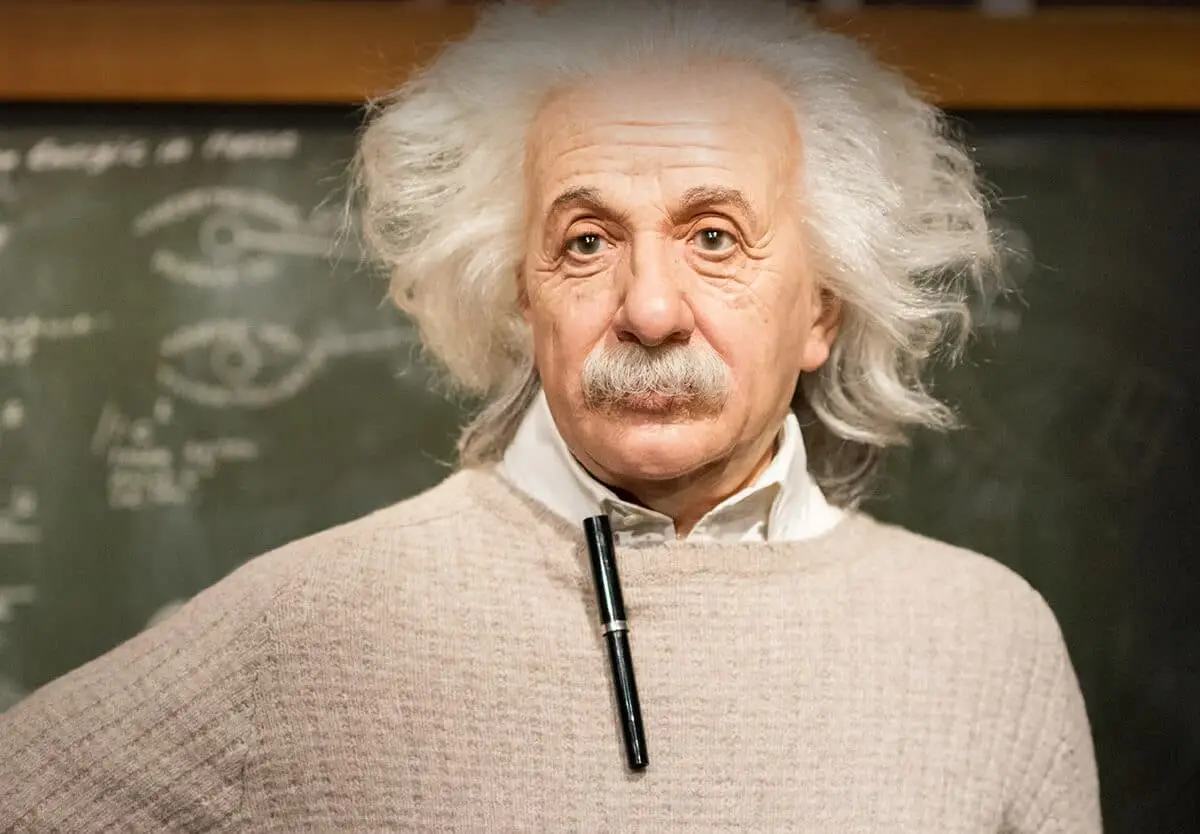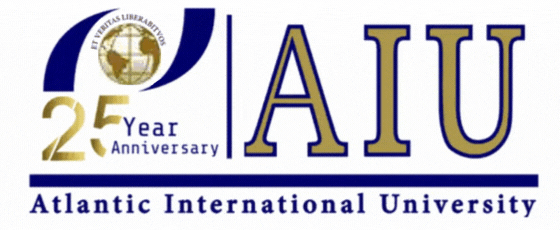- RESEARCHDistance Learning at AIU is enhanced by vast academic resources and innovative technologies build into the Virtual Campus: Hundreds of self-paced courses with video lectures and step by step lessons, thousands of optional assignments, 140,000 e-books, the Social Media & Networking platform allowing collaboration/chat/communications between students, and MYAIU develop students holistically in 11 areas beyond just academics.
- PROGRAMS OFFERED
- Areas of Study
- Courses and Curriculum
- Open Courses
- Register for a Program
- Associate Program
- Associate in Addiction Counseling
- Associate in Agriculture Food And Resources
- Associate in Anti Terrorism Security
- Associate in Behavior Analysis In Special Education
- Associate in Bioethics
- Associate in Climatology
- Associate in Cultural Theological Communication
- Associate in Culinary Arts
- Associate in Ecotechnology
- View all Associates Programs
- Bachelor Program
- Bachelors in Community Development
- Bachelors in Environmental Science
- Bachelor in Education (B.Ed, BS)
- Bachelors in Economics
- Bachelors in Entrepreneurship
- Bachelors in Financial Administration
- Bachelors in Human Resource Management
- Bachelors in Linguistics
- Bachelors in Nutritional Science
- Bachelors in Occupational Health and Safety
- Bachelors in Psychology
- View all Bachelor Programs
- Doctorate Program
- Doctor | of Biology (PhD)
- Doctorate in Business Administration (DBA, PhD)
- Doctor of Economics (PhD)
- Doctor of Electrical Engineering (D.Sc, PhD)
- Doctor of Finance (PhD)
- Doctorate in International Relations
- Doctorate in Information Technology (D.Sc)
- Doctor of Legal Studies (PhD)
- Doctor of Project Management (PhD)
- Doctor of Sociology (PhD, D.Sc)
- Doctorate in Sustainable Natural Resources Management
- View all Doctorate Programs
- Master Program
- Postdoctoral Program
- Postdoctoral in Animal Science
- Postdoctoral in Anti Terrorism Security
- Postdoctoral in Behavior Analysis In Special Education
- Postdoctoral in Bioethics
- Postdoctoral in Blockchain Technology and Digital Currency
- Postdoctoral in Business Management
- Postdoctoral in Cloud Computing
- Postdoctoral in Computer Engineering
- View all Postdoctoral Programs
AIU offers a wide range of majors in areas including the Arts, Business, Science, Technology, Social, and Human studies. More than 120 degrees and programs are available for adult learners at the associate’s, bachelor’s, master’s, doctoral and postdoctoral level. - VIRTUAL CAMPUS
Distance Learning at AIU is enhanced by vast academic resources and innovative technologies build into the Virtual Campus: Hundreds of self-paced courses with video lectures and step by step lessons, thousands of optional assignments, 140,000 e-books, the Social Media & Networking platform allowing collaboration/chat/communications between students, and MYAIU develop students holistically in 11 areas beyond just academics.
- ALUMNI
The world is YOUR campus!”, that is the message of AIU’s month magazine Campus Mundi. Hear the voices and see the faces that make up AIU. Campus Mundi brings the world of AIU to you every months with inspirational stories, news and achievements by AIU members from around the world (students and staff are located in over 200 countries).
Myriam Abu Khalaf

Twice Exceptional students
Gifted students with disabilities
Introduction
Gifted students with disabilities are at risk because their educational and social emotional needs often go undetected. The resulting inconsistent academic performance can lead educators to believe twice-exceptional students are not putting forth adequate effort. Hidden disabilities may prevent students with advanced cognitive abilities from achieving their potential. The frustrations related to unidentified strengths and disabilities can result in behavioral plans become the focus to their interventions. The behaviors are managed but the underlying disabilities are never addresses. School can become a very frustrating experience for struggling twice-exceptional students, their teachers and parents. A collaborative effort between classroom teachers, special educators, gifted educators and parents is needed to identify twice- exceptional students and implement strategies to meet their diverse needs. It is essential that the disabilities are identified early so appropriate interventions can be provided at optimum times .Unfortunately, the struggles of many twice-exceptional students go unnoticed for many years resulting in learning gaps and undeveloped potentials. Twice exceptional students will continue to be at risk until educators can learn about and understand the educational and social/emotional needs of twice-exceptional students. Educators can implement strategies to develop their potential, to identify learning gaps and provide explicit instruction, to support the development of compensatory strategies, to foster their social /emotional development, and to enhance their capacity to cope with mixed abilities
The goals:
1- Recognize and nurture outstanding potential so that gifted students with disabilities may become all that they are capable of becoming
2- How these types of student can can be integrated in the society.
Description
The twice exceptional students are: students who are identifies as gifted and talented in one or more areas of exceptionality (specific academics, general intellectual ability, creativity, leadership, visual, spatial or performing arts).
Characteristics of Twice-Exceptional Children
The following list should be viewed as characteristics which are typical of many children who are gifted and who also have a disability, rather than characteristics which all such children possess. These twice-exceptional children do not form a simple, homogeneous group; they are a highly diverse group of learners.
Indicators of Cognitive/Affective Strengths
· Have a wide range of interests that are not related to school topics or learning.
· Have a specific talent or consuming interest area for which they have an exceptional memory and knowledge.
· Are interested in the big picture rather than small details.
· Are extremely curious and questioning.
· Possess high levels of problem-solving and reasoning skills.
· Have penetrating insights.
· Are capable of setting up situations to their own advantage often as a coping method.
· Are extremely creative in their approach to tasks and as a technique to compensate for their disability.
· Have an unusual imagination.
· Are humorous often in bizarre ways.
· Have advanced ideas and opinions which they are uninhibited in expressing.
· Have a superior vocabulary.
· Have very high energy levels.
Indicators of Cognitive/Affective Problems
· Have discrepant verbal and performance abilities.
· Have deficient or extremely uneven academic skills, which cause them to lack academic initiative, appear academically unmotivated, avoid school tasks, and frequently fail to complete assignments.
· Are extremely frustrated by school.
· Have auditory and/or visual processing problems which may cause them to respond slowly, to work slowly, and to appear to think slowly.
· Have problems with long-term and/or short-term memory.
· Have metrical difficulties exhibited by clumsiness, poor handwriting, or problems completing paper-and-pencil tasks.
· Lack organizational skills and study skills; often appearing to be extremely messy.
· Are unable to think in a linear fashion; have difficulty following directions.
· Are easily frustrated; give up quickly on tasks; are afraid to risk being wrong or making mistakes.
· Have difficulty explaining or expressing ideas, getting-to-the-point, and/or expressing feelings.
· Blame others for their problems while believing that their successes are only due to luck.
· Are distractible; unable to maintain attention for long periods of time.
· Are unable to control impulses.
· Have poor social skills; demonstrate antisocial behaviors.
· Are highly sensitive to criticism.
Analysis, discussion, actualization
Gifted students are a multidimensional process:
Gifted children means: those persons between the ages of five and twenty-one whose abilities, talents, and potential for accomplishment are so outstanding that they require special provisions to meet their educational needs. Children under five, who quality, may also be served. Gifted students are capable of high performance in any or a combination of these areas:
1- General intellectual ability
2- Specific academic aptitude
3- Creative, productive thinking
4- Leadership and human relation skills
5- Visual and performing arts.
Provide Equitable Access to Screening for Gifted Education Services All children (at the district-designated assessment grade/s) participate in the screening process. It is more likely that exceptional abilities and evidence of potential achievement in traditionally underserved children will be recognized.
Use Multiple Sources, Tools, and Criteria for a Body of Evidence Multiple sources and tools allow children to reveal their exceptionalities or potential. A variety of assessment tools should be used to collect information on a student whose background or talent area makes him/her unique from others.
1- Intellectual Ability
2- Achievement
3- Behavioral Characteristics
4- Demonstrated Performance
Seek to find underachieving learners who may be identified only through ability testing; likewise, seek to find underachieving learners who may not be identified through traditional testing but whose giftedness is obvious in focused and deliberate observations of performance on problem-solving tasks. Use a balanced approach to find underachieving students with both standardized test scores and behaviors/performances. Collect data about learners who have documented learning needs in other areas; e.g., Special Education. Ensure that gifted education personnel understand the categories of disabilities and the specific Special Education designations that impact the learning process.
Students with disabilities
It is most important and relevant to student’s educational success to provide the best research based instructional intervention and support possible, for some students, early interventions will prevent the educational difficulties from becoming a disability.
1. Twice-exceptional students must have disability .identified students with disabilities exhibit a marked difference between ability and achievement and evidence of processing deficit.
2. In addition to the current process of using the “discrepancy formula” to determine the presence of a learning disability. IDEA reauthorization allows districts to use a process that determines if the child responds to scientific researches Based interventions.
Points to consider when identifying gifted students with disabilities:
1. Twice-exceptional students typically demonstrate outstanding performance in either the verbal IQ or performance IQ. If students have a significant discrepancy between Verbal IQ and performance IQ, the full scale IQ will not be a true indication of their ability.
2. Twice-exceptional students usually have higher scores on vocabulary, similarities, information, and comprehensive and lower scores on arithmetic’s, digit span, coding, and sequencing.
3. Achievement discrepancies can exist between oral and written expression, basic reading skills and reading comprehension, mathematical reasoning and calculation…
4. Discrepancy between verbal and non verbal scores may be present on the Cognitive Abilities Test.
5. Students may be performing at grade level and be eligible for twice-exceptional programming because they have a discrepancy between ability and achievement.
6. Twice-exceptional students tend to struggle with executive functioning organization, memory, written output and sometimes reading decoding and math calculation.
Individual Disabilities Education Act (IDEA) and Twice-Exceptional Students When Congress approved the Reauthorization of the Individuals with Disabilities Education Act (IDEA) in November of 2004, IDEA acknowledged the needs of twice- exceptional children for the first time. It added gifted and talented students who have disabilities to the groups of students whose needs have priority in U.S. Department of Education grants to guide research, personnel preparation, and technical assistance.
The National Association for Gifted Children regarding specific learning disabilities on their web site. Below is the text regarding specific learning disabilities, which is the type of disability with the highest incidence in the twice-exceptional population? Although districts may, they are not required to accept a discrepancy between ability and performance in determining whether a student has a learning disability. The new law would allow districts to use a process that determines if the child responds to scientific, research-based interventions. Currently in Colorado, several districts and the state have begun conversations about this, and guidelines are being developed and piloted.
IDEA EVALUATIONS, ELIGIBILITY DETERMINATIONS,
INDIVIDUALIZED
EDUCATION PROGRAMS AND EDUCATIONAL PLACEMENTS.
Evaluation Procedures.-
* Specific Learning Disabilities.-
IN General when determining whether a child has a specific learning disability as defined, a local educational agency shall not be required to take into consideration whether a child has a severe discrepancy between achievement and intellectual ability in oral expression, listening comprehension, written expression, basic reading skills, reading comprehension, mathematical calculation, or mathematical reasoning. ADDITIONAL AUTHORITY.- In determining whether a child has a specific learning disability, a local educational agency may use a process that determines if the child responds to scientific, research-based intervention as a part of the evaluation procedures.
Learning Disabilities in IDEA
Conduct of evaluation.- In conducting the evaluation, the local educational Agency shall – Use a variety of assessment tools and strategies to gather relevant functional, developmental, and academic information, including information provided by the parent, that may assist in determining – 1. Whether the child is a child with a disability; and 2 the content of the child’s individualized education program, including information related to enabling the child to be involved in and progress in the general curriculum, or for preschool children, to participate in appropriate activities;
not use any single procedure, measure, or assessment as the sole criterion For determining whether a child is a child with a disability or determining an appropriate educational program for the child. Use technically sound instruments that may assess the relative contribution of cognitive and behavioral factors, in addition to physical or developmental factors.
Additional requirement.- Each local educational agency shall ensure that – tests and other evaluation materials used to assess a child under this section
1. Are selected and administered so as not to be discriminatory on a racial or cultural basis.
2. are provided and administered in the language and form most likely to yield accurate information on what the child knows and can do academically, developmentally, and functionally, unless it is not feasible to so provide or administer
3. Are used for purposes for which the assessments or measures are valid and reliable.
4. Are administered by trained and knowledgeable personnel.
5. Are administered in accordance with any instructions provided by the producer of such tests.
The child is assessed in all areas of suspected disability; and assessment tools and strategies that provide relevant information that directly assists persons in determining the educational needs of the child are provided.
assessments of children with disabilities, including homeless children with disabilities, children with disabilities who are wards of the State, and children with disabilities in military families, who transfer from one school district another school district in the same academic year, are –
1. Coordinated with such children’s prior and subsequent schools as necessary to ensure timely completion of full evaluations.
2. completed within time limits –
3. established for all students by Federal law or State plans
4. That computes the commencement of time from the date on which such children are first referred for assessments in any local educational agency.
. SPECIFIC LEARNING DISABILITY.-
A. IN GENERAL. – The term ‘specific learning disability’ means a disorder in 1 or 2 More of the basic psychological processes involved in understanding or in using language, spoken or written, which disorder may manifest itself in the imperfect ability to listen, think, speak, read, write, spell, or do mathematical calculations.
B. DISORDERS INCLUDED. – Such term includes such conditions as perceptual disabilities, brain injury, minimal brain dysfunction, dyslexia, and developmental aphasia.
C. DISORDERS NOT INCLUDED.- Such term does not include a learning problem That is primarily the result of visual, hearing, or motor disabilities, of mental Retardation, of emotional disturbance, or of environmental, cultural, or economic Disadvantage. Although they are not included in this section of IDEA which is limited to Specific Learning Disabilities, many states, including Colorado, do include these other categories of disorders as factors when determining if a student is Twice-exceptional.
Six steps to Strategic Planning for Twice-Exceptional Students
1. Identify stakeholders. The first step in implementing change is to identify the stakeholders, those people who will be impacted by the change or will play a role in implementing change. Stakeholder groups for twice-exceptional education should include representatives from gifted education, special education, classroom teachers, administrators, counselors, students, and parents.
2. Organize a steering committee. The steering committee must include representative from each stakeholder group. Select members who are innovators and early adaptors. This group will guide the work in developing a plan and implementing change.
3. Build collaboration. A collaborative team effort is recommended to address the unique needs of twice-exceptional students. Work to develop a collaborative effort through training and discussions. Remember, each stakeholder group must have a voice and must become part of the collaboration
4. Determine Needs and Identify problems and/or issues. Identify the concerns of each stakeholder group. What are the specific needs of twice-exceptional students and what are the problems/issues that prevent these needs from being met?
5. Develop an action plan. Having a clear understanding of what you want to accomplish unifies the commitment of the team. The action plan should include: goals, strategies to achieve goals, anticipated resistance or obstacles you may encounter, resources needs, and May a way to measure progress/success.
6. Implement and sustain change. To sustain change it must be integrated in to the educational system. Determine how identification and programming can be integrated into the system that already existed. Plan for extensive training and written documentation to support successful implementation of the plan
Programming Strategies for Gifted Students with Disabilities
The needs of most twice-exceptional students can be met in the regular classroom through appropriate identification and an individualized approach. However, the classroom teacher must have support from both gifted educators and special educators to Implement effective strategies. The best results are achieved when there is collaboration between the classroom teacher, gifted educator, special educator, parents, and the student.
Programming for twice-exceptional students must include strategies to:
· nurture the student’s strengths and interests
· foster their social/emotional development
· enhance their capacity to cope with mixed abilities
· identify learning gaps and provide explicit instruction
· support the development of compensatory strategies
A Continuum of Services
The unique characteristics of individual students should determine the type and level of support services the student receives. Some twice-exceptional students will require more intensive services than others. Because gifted and twice-exceptional students differ in a variety of ways, their needs require appropriate placement along several continuums:
A continuum of services is the variety of delivery and programming options available to gifted and talented students for meeting educational and affective needs.
A continuum of delivery of services refers to where twice-exceptional students receive services: general classroom, resource room, classroom cluster groups, interest groups, magnet classrooms, and special schools for gifted students, vertical team groups, learning clusters for special interests or topics, mentorship’s, or special education.
The continuum of learning refers to the content standards and benchmarks, K-12, that allow for continuous learning and/or acceleration based upon progress monitoring and student achievement in the content benchmarks.
A continuum of programming options refers to the curricular and affective opportunities provided through implementation of programming components (structure, content options, differentiated instruction, and affective guidance.)
Nurture Students’ Strengths and Interests
Programming for gifted education seeks to nurture and develop the strengths and interests of students. All gifted students require balanced gifted programming over time. These programming components for gifted education are based upon national standards, research, and best practices in gifted education. Implementing these strategies will improve students’ motivation, develop confidence, and support student achievement. These are the recommended programming components to nurture gifted potential in twice-exceptional students:
Strength/Interest Accommodation
1- Differentiated Instruction
2- Affective Guidance & Counseling
3- Acceleration
4- Content Extension
5- Higher Order Thinking Skills
Acceleration
Acceleration is the appropriate movement of a student and/or curriculum by pace or place to match learning opportunities with student strengths, readiness, and needs.
· Single Subject Acceleration: The delivery of curriculum by either moving the child into a higher grade level or providing higher grade-level curriculum in age-based classrooms.
· Concurrent Enrollment: Attending classes in more than one grade or building. (E.g. A middle school student attends a class at the high school).
· Post-Secondary Options: High school students are allowed to spend part of their day attending classes at a local college or university and receive both high school and college credit.
· Rocky Mountain Talent Search: Students take the SAT or ACT in middle school and can qualify for advanced level courses at universities throughout the country.
· Correspondence/Distance Learning: Courses taken within or outside regular school time for personal interest or credit.
· Advanced Placement/International Baccalaureate: Students take AP or IB high school courses and take a test to qualify for college credit.
· Independent Study: Students pursue an area of interest in-depth or required curriculum at a pace that meets their individual needs.
Content Extension
Content Extension is providing greater depth or breadth to the educational experiences through enhanced curriculum or academic programs and competitions. Content Extension should be a systematic plan for extending students’ learning in the following ways:
Opportunity for real-life research and independent study
· Academic programs and competitions
· Mentors
Higher-Order Thinking Skills
Curriculum for twice-exceptional students should challenge their thinking and problem- solving skills. The Socratic questioning method helps students formulate questions and think through problems. Twice-exceptional students often struggle with executive processes. They have a difficult time organizing, prioritizing, and generalizing information. Teachers can help by modeling and teaching met cognitive skills. Use think aloud to help students develop their thinking language.
Higher-Order Thinking Skills include:
· Analytical Thinking Skills–various cognitive processes that deepen understanding of knowledge and skills.
· Critical Thinking Skills–various thinking skills that are used to analyze and evaluate in order to respond to an argument or position.
· Executive Processes–various cognitive skills involved in organizing, synthesizing, generalizing, or applying knowledge.
· Creative Thinking Skills–various cognitive skills that are involved in creative production.
· Creative Problem Solving–Provides an excellent structure for helping twice exceptional students learn how to creatively solve problems.
Social/Emotional Support
Twice-exceptional students need a nurturing environment that supports the development of the students’ potential. An encouraging approach is recommended over implementing measures from a punitive perspective.
Teachers provide a nurturing environment when:
· They value individual differences and learning styles;
· The development of student’s potential is encouraged;
· Students’ readiness, interests, and learning profile shape instruction;
· Excellence is defined by individual growth;
· Flexible grouping is used for instruction;
· Students are assessed in multiple ways;
· Instruction includes activities for multiple intelligences.
Social/Emotional Issues
Making friends can be difficult for twice-exceptional students. They may need help developing peer relationships and opportunities to work with peers of similar abilities and interests. Friendship groups help twice-exceptional students learn how to make and keep friends.
Twice-exceptional students can be very self-critical and this can lead to dysfunctional perfectionism. Counseling is needed to address their unique needs and should be available on an as-needed basis.
Developing an awareness of their strengths and challenges is beneficial for twice exceptional students. Role playing can help students learn how to become a self-advocate and how to ask for help when it is needed.
Lack of organizational, time management, and study skills can have a negative impact on the emotional well-being and school performance of twice-exceptional students. They need explicit instruction to develop those skills and specialized intervention services related to challenge areas.
Learning how to set personal goals and how to develop sequential steps or a series of short-term goals to achieve long-term goals can be beneficial for twice-exceptional learners. Career and college guidance is essential for these students.
Steps to Create an Individual Plan
The focus of the individual plan must be to develop the student’s strengths. Success in the strength areas promotes the development of a strong self-concept and self-efficacy. Instruction that builds on the student’s interests can motivate them to persevere when learning challenges cause them to struggle in school. Appropriate assessments must be used to identify hidden disabilities and learning gaps. Twice-exceptional students need explicit instruction in their specific deficit areas. Teaching students compensatory strategies helps them learn strategies they can use independently to be successful.
Identify Students’ Strengths, Interests, and Challenges.
Select Specific Strategies Based on Student Needs.
· Strength/Interest-Based Accommodations
· Accommodation to Access Learning
· Explicit Instruction for Compensatory Strategies
· Explicit Instruction for Intervention/Remediation
Complete the Twice-Exceptional Strategies Plan.
Educational Planning for a Continuum of Abilities
Strength/Interest-Based Accommodations
These are instructional strategies that provide a stimulating educational environment emphasizing high-level abstract thinking, creativity, and a problem-solving approach. They build on intrinsic motivation and promote active inquiry, experimentation, and discussion. Emphasis is placed on students’ readiness, interests, and learning profiles. Teachers shape instruction with multi-option assignments that enable students to use their strengths to demonstrate their knowledge. Examples: Pre-testing and compacting the curriculum to eliminate unnecessary drill; orbital studies related to some facet of the curriculum that allow students to investigate a topic in greater depth and become the class expert.
Accommodations to Access Learning
These are instructional and/or behavioral strategies that, when implemented, provide students with access to the curriculum. Accommodations do not change the content of the curriculum being taught. Rather, they change how the content is presented and/or how a student demonstrates mastery. Examples: Shortened assignments, providing copies of notes during a lecture, providing extra time, and teacher-read directions. Explicit Instruction: Compensatory Strategies These are skills taught to students that, when implemented by the student, will allow them to complete tasks independently. The goal is to teach a student compensatory learning strategies so they will learn to initiate the strategies independently in order to be successful in the learning environment. Examples: Use of spell checker, re-read aloud when editing written work, color-coding for organization, etc. Explicit Instruction: Intervention/Remediation Utilize recommended assessments to identify learning gaps and then provide explicit instruction/remediation in the specific deficit area(s). Examples: Identifying phonological core deficits and providing explicit instruction in segmenting and blending speech sounds.
Parenting gifted students with disabilities
1. Create a home environment that nurtures your child’s strengths and interests.
2. Build a working relationship with your child’s school and keep the lines of communication open between home and school.
3. If your child is depressed dislikes schools, underachieves or develops behaviors problems communicate your child’s problems and needs to the scrolls.
4. Work in partnership with the school to identify your child’s learning and/or social emotional problems
5. Collaborate with the school to develop a suitable educational plan for your child that addresses his/her needs.
6. Help your child learn skills needed to be successfully in schools. Assist with homework and projects, but do not assume responsibility
7. Remember that the role of the parents change as the child reaches different ages.
8. equate successes with effort not ability and view mistakes as a values step in learning
9. Help your child learn how to become a self advocate.
10. Encourage your child to develop the skills necessary to become independent life- long learners.
11. Advocate for your child, but don’t overprotect him/her. Hold your child accountable for his/her behavior and achievement Parent Advocacy
1. Build a working partnership with your child’s school
2. work with the school’s staff to improve educational opportunities for all students
3. support the positive efforts of teachers and school staff to meet the individual educational needs of students
4. participate on school committees like the school’s accountability committee and school enrichment or activity committees
5. Volunteer your time to assist with the activities or help in the classroom media center, computer lab, etc…
When Children Experience Problems in School
1. Know the child.
· What are his/her special interests, strengths, and struggles?
· How does the child interact with peers, older children, younger children?
· How does the child feel about trying new things or making mistakes?
2. Clarify the issues and try to get a sense of the real problems by discussing them thoroughly with the child.
3. Schedule a meeting with the classroom teacher.
· Approach the teacher with care and sensitivity.
· Plan the meeting and topics to discuss.
4. during the conference:
· Keep the conversation a positive learning exchange.
· Start with positive comments about the school and the teacher. Thank the teacher For …………..
· Communicate expectations and share specific examples of the child’s work, feelings, strengths, struggles, interests, and after-school activities.
· Listen carefully to what the teacher has to say.
· Express willingness to help resolve the problem and work collaboratively toward a positive solution.
· Decide together what the child, you, and the teacher will do.
· Determine a reasonable timeline and establish when the effort will begin and when Progress will be evaluated.
5. after the conference:
· Keep the lines of communication open.
· Schedule a follow-up meeting to assess progress.
6. If the child continues to struggle, ask that he/she be referred to the school’s student Study team. This team will develop a plan to meet individual educational needs and Recommend specific intervention strategies. If problems persist, the student study Team will refer the child to special education for assessment.
Conclusion
Twice exceptional-students are difficult to identify because they possess the characteristics of gifted students and the characteristics of students with disabilities. Gifted characteristics may mask disabilities or disabilities may mask gifted potential. The strength, the disabilities or both may not be identified.
When gifted students begin to struggle in school, their identification for gifted services is sometimes questioned. Just because students have disabilities does not mean they are not gifted. Many eminent people have struggled in school and later gone on to make substantial contributions to society. Not achieving commensurate with ability should raise a red flag that there is the possibility a disability may be impacting learning.
Disabilities in gifted students can go unnoticed for years and valuable windows for effective interventions are missed. It is important to identify the disability as early as possible to prevent the development of behavioral and social/emotional issues. Students identified with a disability should be screened at the district-designated assessment grade/s to provide equitable access to gifted education services for all students.
Strengths and disabilities may risk mask each other and the student may appear to have average ability. However, inconsistent performance may indicate the presence of gifted potential and disabilities. It is important to focus on developing potential and providing strategies to help students when they struggle. Research-bases strategies for twice- exceptional students can be implemented before formal identification is achieved. Continue to look for indicators of gifted behaviors that suggest a disability
The Twice exceptional student’s strengths are:
· Superior vocabulary
· Highly creative
· Resourceful
· Curious
· Imaginative
· questioning
· Problem-solving ability
· Sophisticated sense of humor
· Wide range of interests
· advanced ideas and Opinions
· Special talent or consuming interest
Their challenges:
· Easily frustrated · Stubborn
· Manipulative
· Opinionated
· Argumentative
· written expression
· Highly sensitive to criticism
· Inconsistent academic Performance
· Lack of organization And study skills
· Difficulty with social Interactions
Programming
In a collaborative effort between the classroom teacher, gifted educator and special educators, appropriate strategies will be implemented to:
· Nurture the student’s potential
· support their development of compensatory strategies
· identify their learning gaps and provide explicit instruction
· foster their social and emotional development
· enhance their capacity to cope with mixed abilities.
Personnel experience and suggestions
In the school where I teach, I have two cases of twice exceptional students, one boy and one girl. The boy has a problem in his eyes and the girl has some how a problem in understanding the people around her.
Most of the time while I am explaining the lesson I am really surprise from the questions that they asked me, so polite so brilliant so organized and sometimes very sociable. In their eyes there is a special light which I feel it but I can not explain more.
These students need a special treatment, they love to be responsible. Those selves they feel different and some of the teacher are not enough educated in this point so they treat them like stupid and they are surprised from their notes in language and calculation
What I want to say is being different from the others its an advantage, it if the difference we start ask question, we start to collect information, we make many researches to arrive to the answers of the reality.
Being different is not a mistake, its is important for us to know how to deal with differences. To be different is how to continue living and to change life to the best in this world.
References
1- Baum, S.M. & Owen, S.V. (2004). To Be Gifted & Learning Disabled: Strategies for Helping Bright Students with disabilities.
2- Baum, S.M., Olenchak, F.R. & Owen, S.V. (1998). Gifted Students with Attention Deficits: Fact and/or Fiction?
3- Bees, C. (1998). The GOLD Program: A Program for Gifted Learning Disabled Adolescents. Roeper Review, 21
AIU Quick Search
Search…
About AIU
General Information
Mission & Vision
Faculty & Staff
School of Business & Economics
School of Science & Engineering
School of Social & Human Studies
Programs Offered
Distance Learning
Admissions
Online Courses
Career Center
Online Library
Accreditation
Press Room
Alumni
GREAT EDUCATORS HAVE ALWAYS KNOWN THAT LEARNING IS NOT SOMETHING THAT’S LIMITED TO THE CLASSROOMS, OR THAT SHOULD BE FORCIBLY UNDERTAKEN UNDER THE SUPERVISION OF TEACHERS.
BILL GATES
Contact Us Today!
We understand how busy adults do not have time to go back to school. Now, it’s possible to earn your degree in the comfort of your own home and still have time for yourself and your family. The Admissions office is here to help you, for additional information or to see if you qualify for admissions please contact us. If you are ready to apply please submit your Online Application and paste your resume and any additional comments/questions in the area provided.
Pioneer Plaza
900 Fort Street Mall 905
Honolulu, HI 96813
800-993-0066 (Toll Free in US)
808-924-9567 (Internationally)
8082150431 (Whatsapp)
Request Information!
Atlantic International University
Get to know the AIU experience
Contact Us Today!
We understand how busy adults do not have time to go back to school. Now, it’s possible to earn your degree in the comfort of your own home and still have time for yourself and your family. The Admissions office is here to help you, for additional information or to see if you qualify for admissions please contact us. If you are ready to apply please submit your Online Application and paste your resume and any additional comments/questions in the area provided.
Pioneer Plaza
900 Fort Street Mall 905
Honolulu, HI 96813
800-993-0066 (Toll Free in US)
808-924-9567 (Internationally)
808-947-2488 (Fax)
AIU Success Stories







Contact Us Today!
Begin Your Journey!
AIU’s Summer of Innovation and Growth gives you the ability to earn up to $5000 in tuition credit by completing free lessons and courses.
Whether you’re looking to acquire new skills, advance your career, or simply explore new interests, AIU is your gateway to a world of opportunities. With free access to 3400 lessons and hundreds of courses the ability to earn credits and earn certificates there’s no better time to start learning.
Join us today as a Guest Student and take the first step towards a brighter, more empowered future.
Explore. Learn. Achieve.
Degrees

Contact Us
Atlantic International University
900 Fort Street Mall 905 Honolulu, HI 96813 [email protected]
Quick Links
Home | Online Courses | Available Courses | Virtual Campus | Career Center | Available Positions | Ask Career Coach | The Job Interview | Resume Writing | Accreditation | Areas of Study | Bachelor Degree Programs | Masters Degree Programs | Doctoral Degree Programs | Course & Curriculum | Human Rights | Online Library | Representations | Student Publication | Sponsors | General Information | Mission & Vision | School of Business and Economics | School of Science and Engineering | School of Social and Human Studies | Media Center | Admission Requirements | Apply Online | Tuition | Faculty & Staff | Distance Learning Overview | Student Testimonials | AIU Blogs | Register for Program | Privacy Policy | FAQ



















